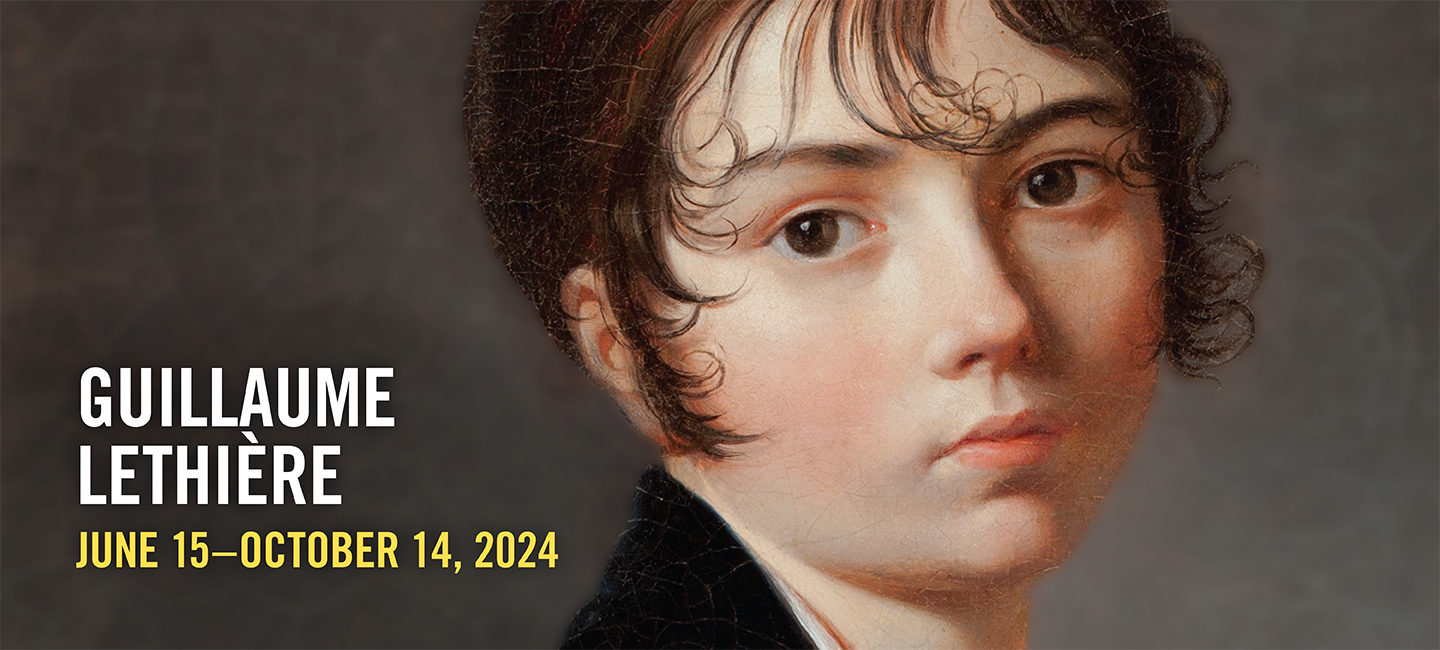Caribbean Contemporaries
CHEVALIER DE SAINT-GEORGE
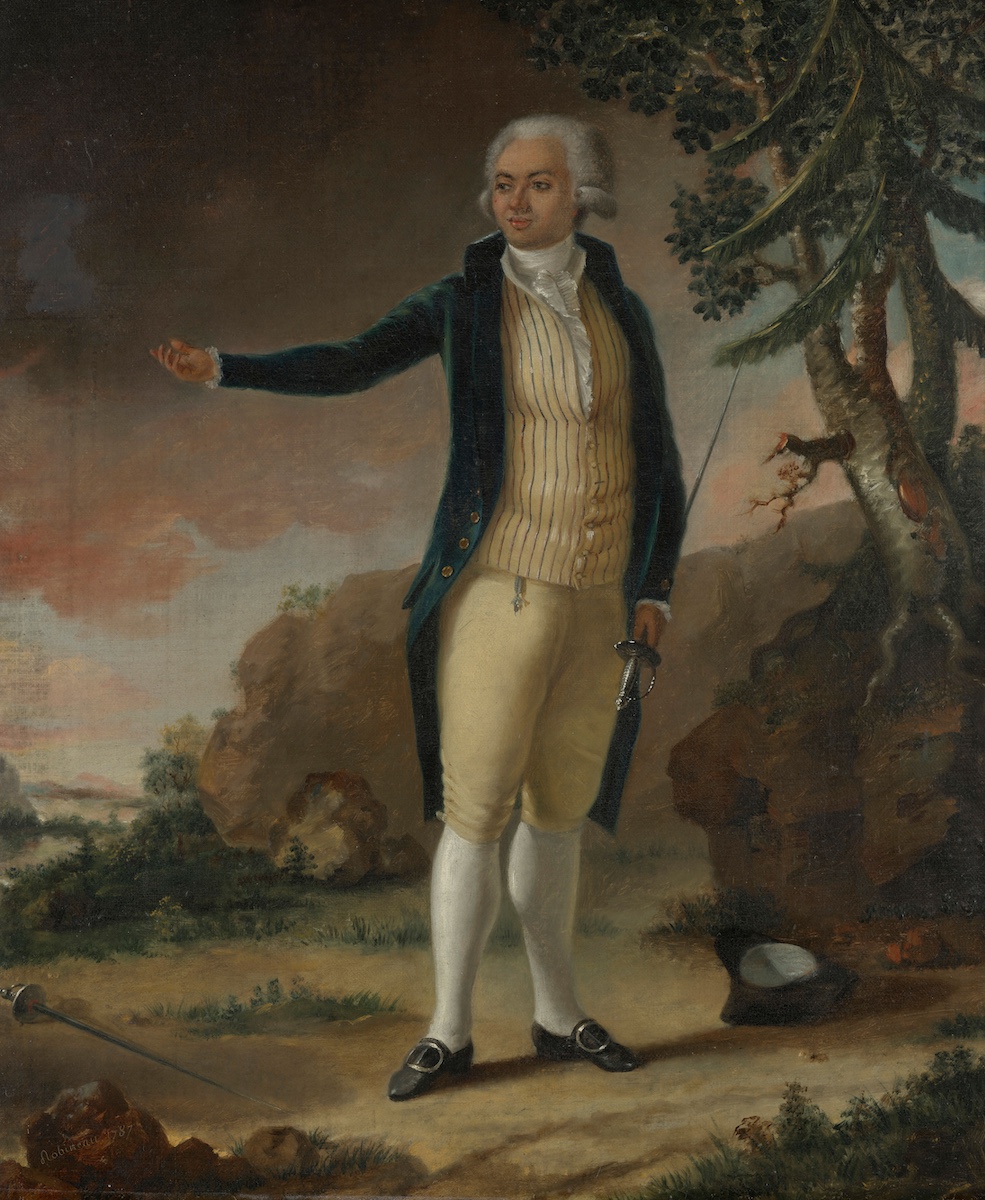 Alexandre-Auguste Robineau, Chevalier de Saint-George, 1787, oil on canvas. Royal Collection Trust, HM King Charles III, United Kingdom, RCIN 404358. Photo: Royal Collection Trust/His Majesty King Charles III
Alexandre-Auguste Robineau, Chevalier de Saint-George, 1787, oil on canvas. Royal Collection Trust, HM King Charles III, United Kingdom, RCIN 404358. Photo: Royal Collection Trust/His Majesty King Charles IIIJoseph Bologne was born in Guadeloupe to a white plantation owner Georges Bologne de Saint-George and an enslaved woman from Senegal known as Nanon. He came to France at the age of seven and received the formal education of a wealthy nobleman, becoming a renowned violinist, composer, fencer, and horseman. He earned the title Chevalier de Saint-George in recognition of his skill. During the French Revolution, he led a military regimen comprising mostly men of color that became known as the Légion Saint-George.
JEAN-BAPTISTE BELLEY
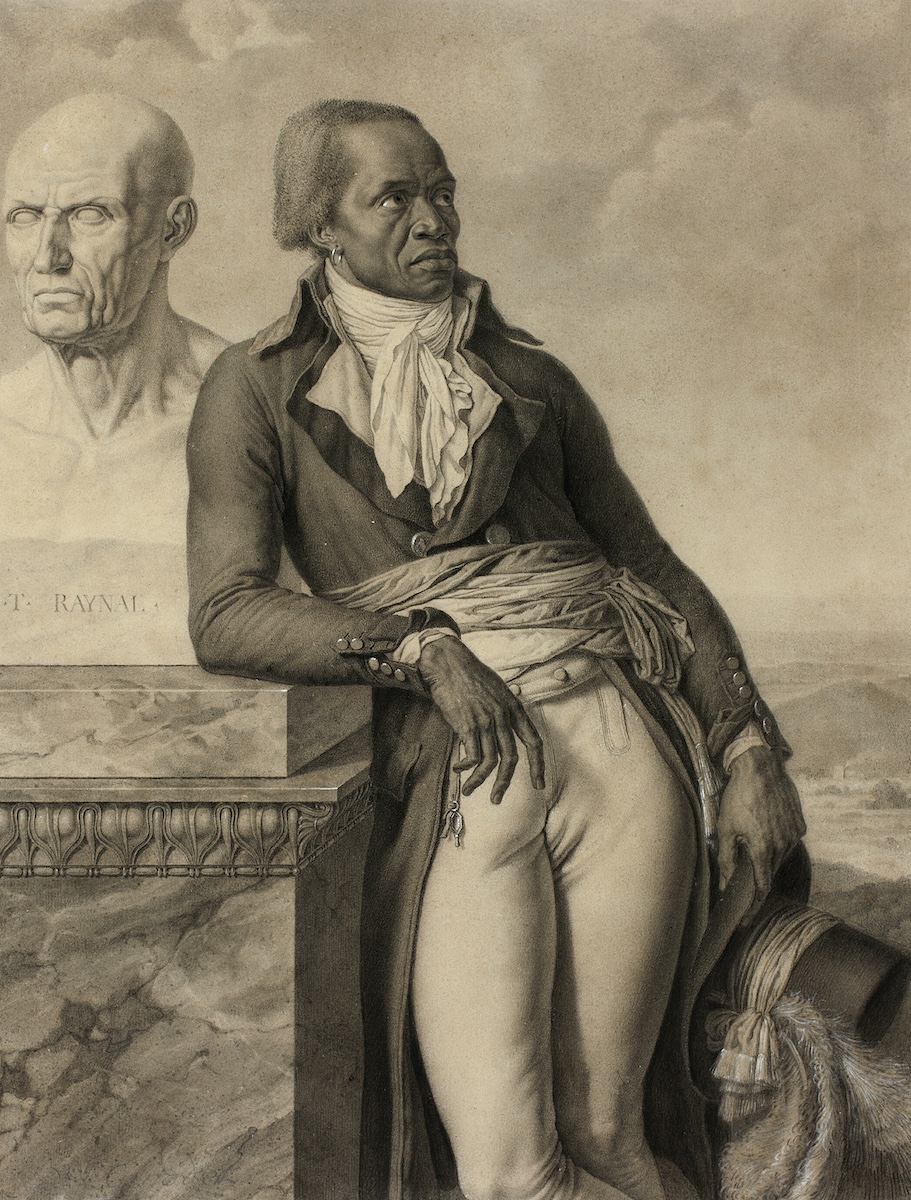 Attributed to Antoine Claude Pannetier, after Anne-Louis Girodet, Jean-Baptiste Belley, c. 1797, black chalk with stumping, traces of pen and black ink, heightened with white. Art Institute of Chicago, purchased with funds provided by the Joseph and Helen Regenstein Foundation, 1973.156
Attributed to Antoine Claude Pannetier, after Anne-Louis Girodet, Jean-Baptiste Belley, c. 1797, black chalk with stumping, traces of pen and black ink, heightened with white. Art Institute of Chicago, purchased with funds provided by the Joseph and Helen Regenstein Foundation, 1973.156 Born in Senegal and sold into slavery in the French colony of Saint-Domingue (present-day Haiti) at the age of two, Belley was emancipated after enlisting in the French army. He served as a captain during the Haitian Revolution, fighting pro-slavery colonists in the north of Saint-Domingue. In 1793, he was elected as the first Black deputy to the National Convention and sent to Paris. Anne-Louis Girodet’s portrait of Belley is of the most iconic and enduring images of a Black political and cultural figure of the time and commemorates his participation in the assembly that abolished slavery in France in 1794.
THOMAS-ALEXANDRE DUMAS
 Jacques Marchand, after Guillaume Lethière, Portrait of General Thomas-Alexandre Dumas, 1797–98, stipple engraving. Daguillard Collection. Photo: Neil Greentree
Jacques Marchand, after Guillaume Lethière, Portrait of General Thomas-Alexandre Dumas, 1797–98, stipple engraving. Daguillard Collection. Photo: Neil GreentreeThomas-Alexandre Dumas was born in Saint-Domingue (present-day Haiti) to Alexandre Antoine Davy de la Pailleterie, a French nobleman, and Marie-Cessette Dumas, an enslaved woman of African descent. Like Lethière, he traveled to France at the age of fourteen. Dumas enrolled in the army and quickly rose up the ranks to become a revolutionary and Napoleonic war hero. He was a close friend of Lethière’s and the artist captured him in a print commemorating one of one of his most famous military exploits against Austria—the 1797 Battle of the Clausen Bridge.
JOSÉPHINE BONAPARTE
 Andrea Appiani, the elder, Joséphine Bonaparte Crowning a Myrtle Tree, 1796, oil on canvas. Courtesy of Robilant + Voena. Private collection
Andrea Appiani, the elder, Joséphine Bonaparte Crowning a Myrtle Tree, 1796, oil on canvas. Courtesy of Robilant + Voena. Private collectionJoséphine was raised in the French Caribbean colony of Martinique in a wealthy white plantation-owning family. She traveled to France with her father in 1779 and was married shortly thereafter to her first husband Alexandre de Beauharnais, a French noble with connections to her family in Martinique. Beauharnais was executed during the Revolution and Joséphine too was imprisoned and narrowly escaped the guillotine. In 1795, she met Napoleon, then an ambitious general in the French army, and they were quickly married. When Napoleon was elected Emperor of France in 1804, Joséphine became Empress and the most famous Creole woman of her time. Lethière painted her portrait in her coronation costume in 1807.
JENNY PRINSSAY
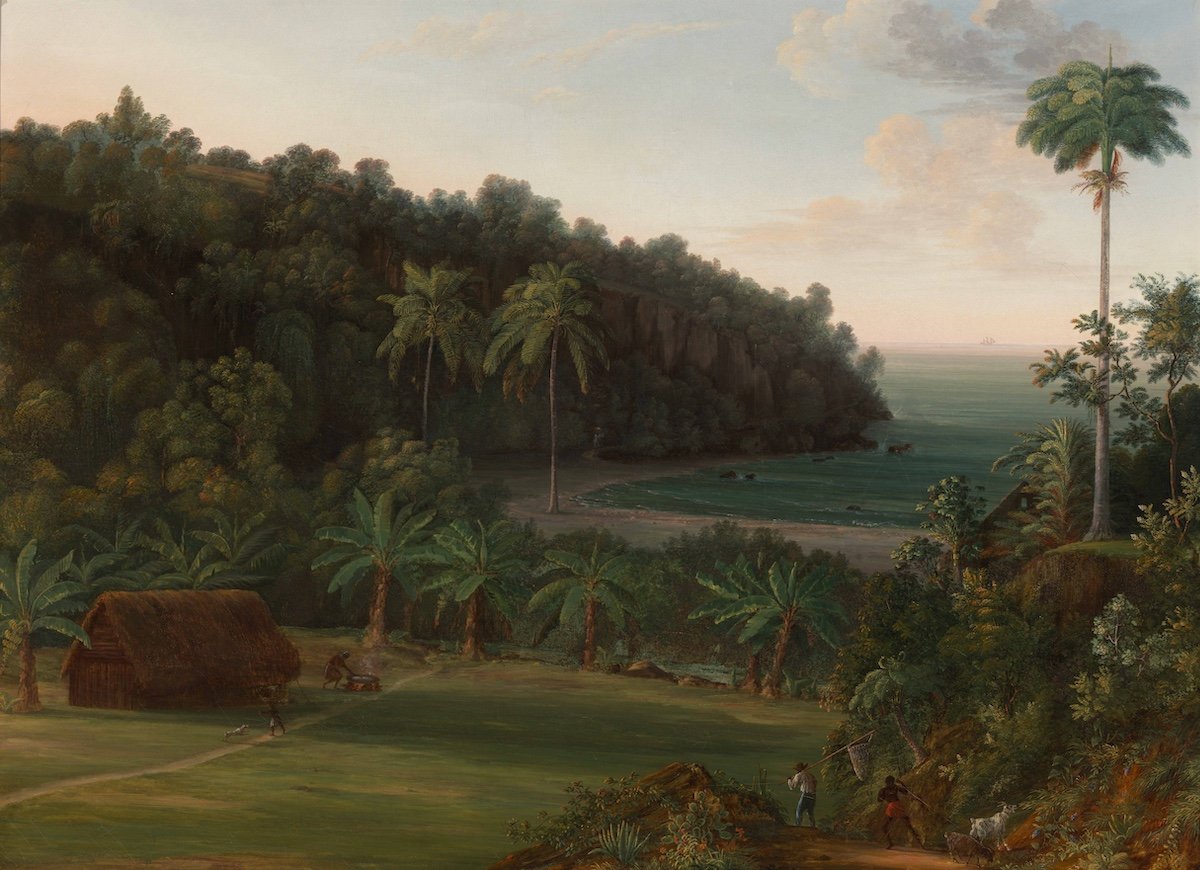 Jenny Prinssay, View of a Bay on the Island of Martinique, 1814, oil on canvas. Private collection
Jenny Prinssay, View of a Bay on the Island of Martinique, 1814, oil on canvas. Private collectionJenny Prinssay was born in Guadeloupe to a wealthy white family that owned sugar plantations before moving to Paris. Given the heightened interest in art education among upper-class women during this era, particularly in studios of renowned artists like Lethière, it is likely that Prinssay worked in close proximity to artists in his sphere. She made her Salon debut in 1801 and exhibited verdant landscapes of Guadeloupe and Martinique at the Salon of 1814. Her landscapes constitute rare examples of early nineteenth-century depictions of the French colonies by a Caribbean-born artist.
Benjamin Rolland
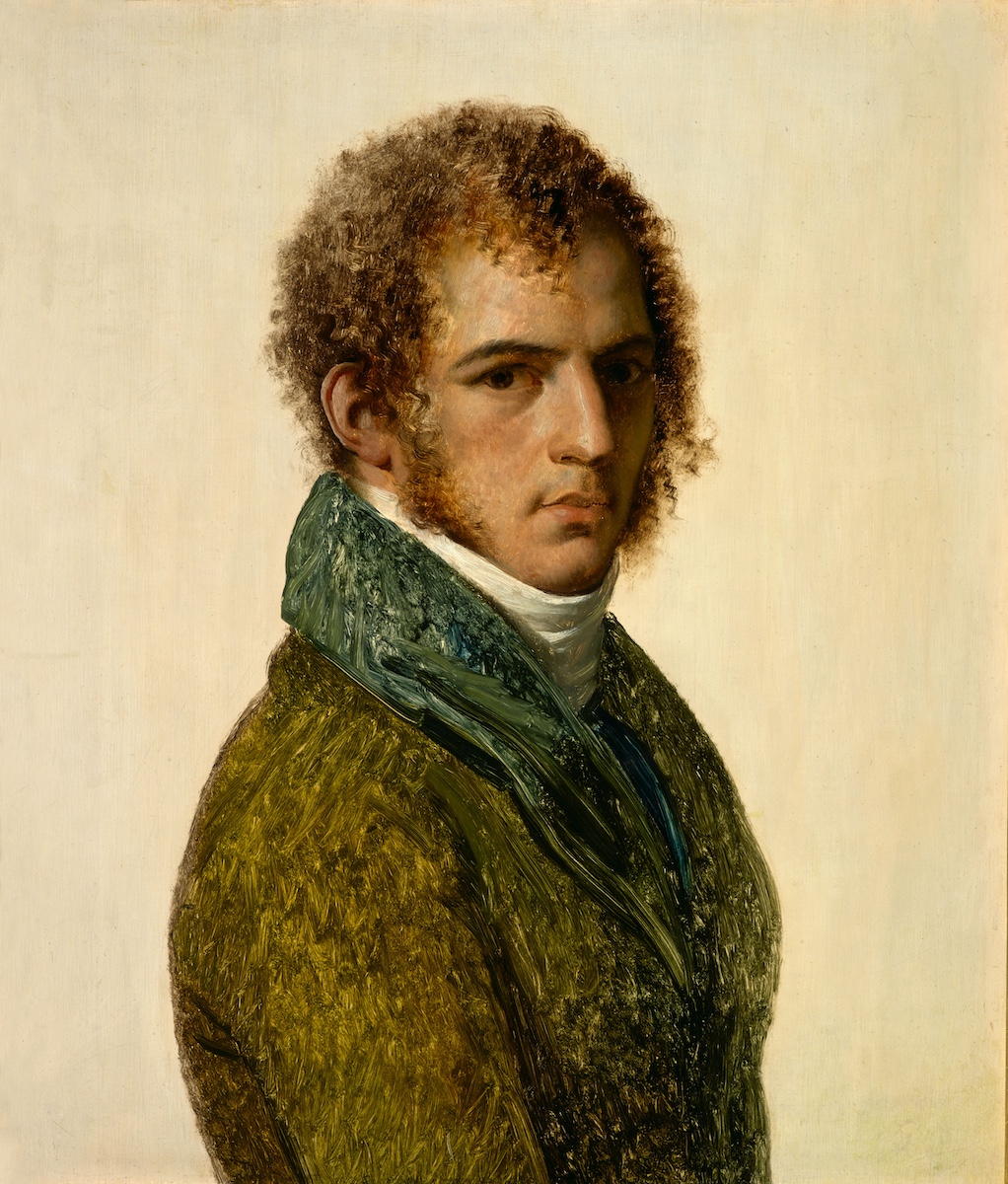 Anne-Louis Girodet, Benjamin Rolland, 1816, oil on panel. Musée de Grenoble, France, MG 156. Photo: Ville de Grenoble /Musée de Grenoble/J.L. Lacroix
Anne-Louis Girodet, Benjamin Rolland, 1816, oil on panel. Musée de Grenoble, France, MG 156. Photo: Ville de Grenoble /Musée de Grenoble/J.L. Lacroix Like Guillaume Lethière, Benjamin Rolland was born in Guadeloupe. Scholars only recently uncovered an archival act indicating that Rolland was born enslaved and then emancipated alongside his mother and sister in 1777. Later in his youth, he moved to mainland France and joined Jacques-Louis David’s studio. He built a successful career as a painter and also went on to direct the Musée de Grenoble and the École de dessin (drawing school) in Grenoble from 1817 to 1853.
FORTUNÉE HAMELIN (NÉE LORMIER-LAGRAVE)
 Andrea Appiani, the elder, Madame Hamelin, née Fortunée Lormier-Lagrave, 1798, oil on canvas. Musée Carnavalet–Histoire de Paris, P1685. Photo: Musée Carnavalet - Histoire de Paris
Andrea Appiani, the elder, Madame Hamelin, née Fortunée Lormier-Lagrave, 1798, oil on canvas. Musée Carnavalet–Histoire de Paris, P1685. Photo: Musée Carnavalet - Histoire de ParisFortunée Hamelin, known as Madame Hamelin, was, alongside her friend Joséphine Bonaparte, a merveilleuse—a prominent and fashionable socialite during the Directory and Napoleonic periods. Similar to Joséphine, Madame Hamelin was Creole—born and raised in the Caribbean. Her father was a wealthy plantation owner in the French colony of Saint-Domingue (present-day Haiti); the identity of her mother is less certain but she is believed to have been a femme libre de couleur (free woman of color).
ALEXANDRE DUMAS
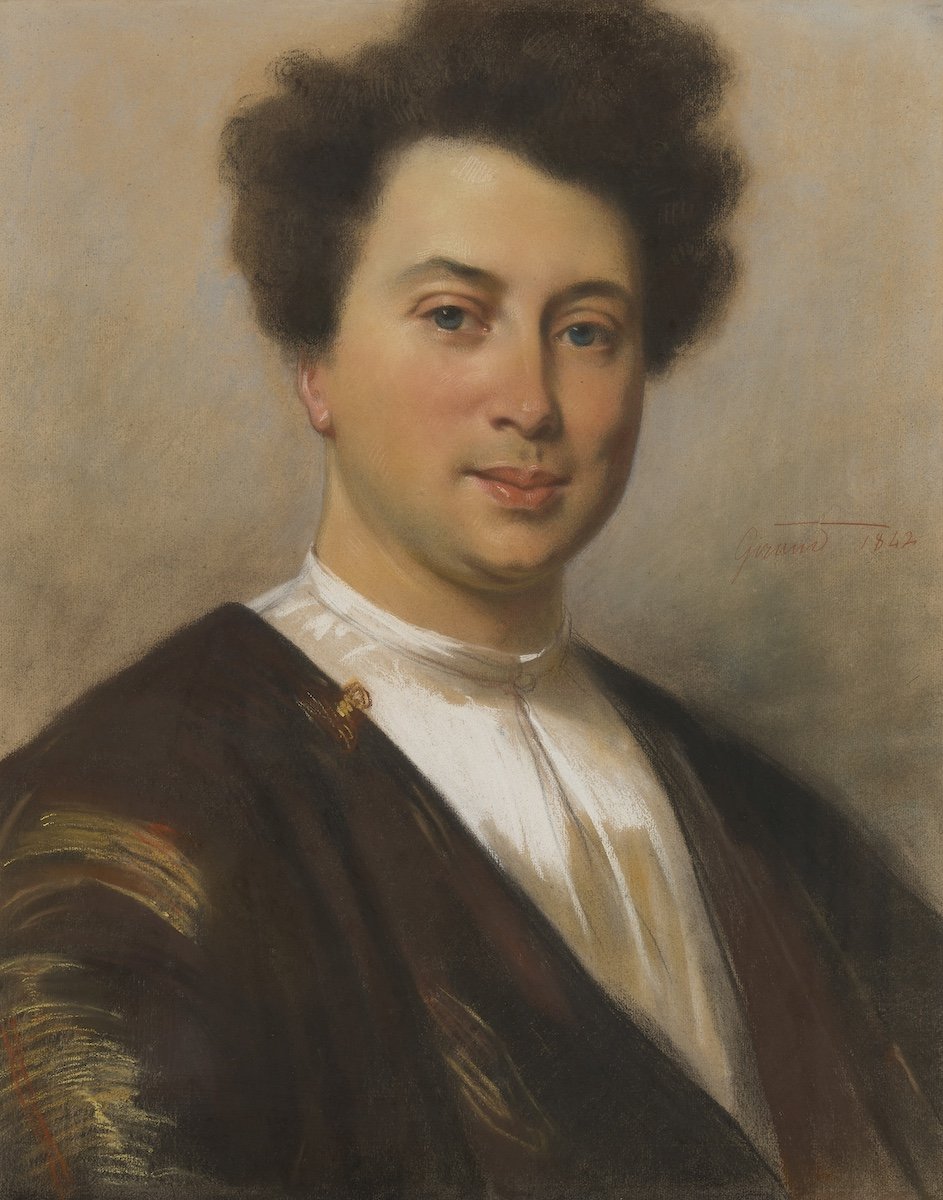 Pierre François Eugène Giraud, Alexandre Dumas, 1842, pastel. Daguillard Collection. Photo: Neil Greentree
Pierre François Eugène Giraud, Alexandre Dumas, 1842, pastel. Daguillard Collection. Photo: Neil GreentreeThe son of General Thomas-Alexandre Dumas, Alexandre Dumas was a celebrated novelist and playwright. His most notable works include The Count of Monte Cristo and The Three Musketeers. It is through his memoirs that we know of the close friendship between Lethière and General Dumas. Alexandre Dumas was also one of the two speakers to pronounce a eulogy at Lethière’s funeral.
Théodore Chassériau
 Théodore Chassériau, Self-Portrait, 1835, oil on canvas. Musée du Louvre, Paris, RF 3788. Photo: RMN-Grand Palais / Art Resource, NY
Théodore Chassériau, Self-Portrait, 1835, oil on canvas. Musée du Louvre, Paris, RF 3788. Photo: RMN-Grand Palais / Art Resource, NYBorn in the Spanish colony of Santo Domingo (now the Dominican Republic) to a white father and a mixed-race mother, Théodore Chassériau moved to Paris with his family at the age of one. From an early age, he demonstrated an extraordinary gift for drawing and became a pupil of Jean-Auguste-Dominique Ingres at eleven. He developed his own unique style within Romanticism and beginning in 1836 exhibited history paintings and portraits regularly in the Salon, as well as executing large-scale allegorical murals commissioned for Parisian public buildings.
Évremond de Bérard
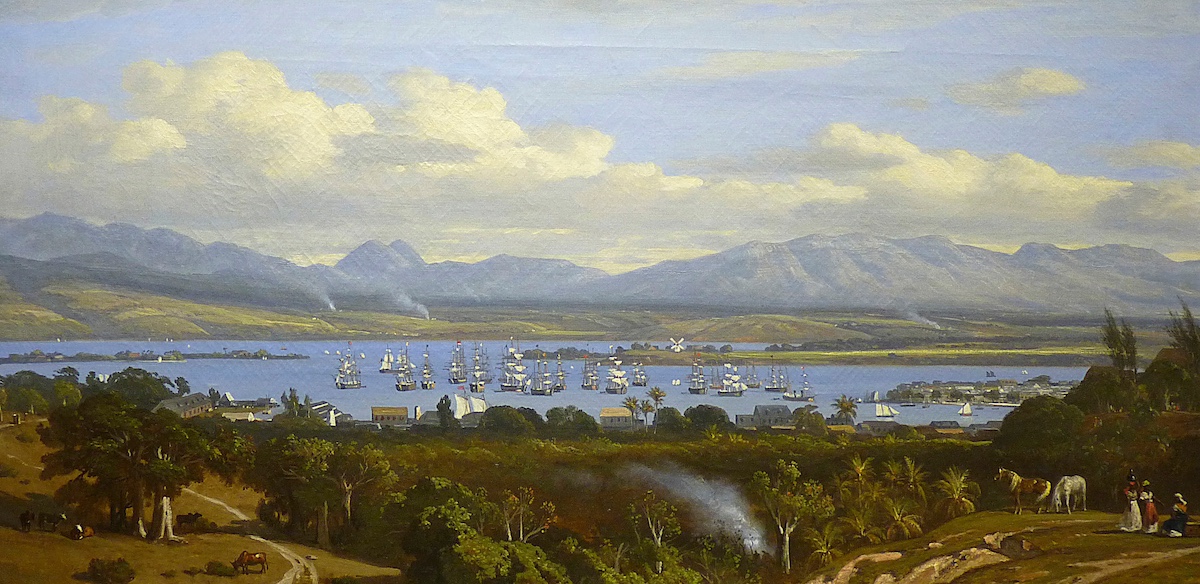 Évremond de Bérard, Bay of Pointe-à-Pitre and Petit Cul-de-Sac Marin, c. 1852–57, oil on canvas. Musée départemental d'Art et d'Histoire (MUSARTH), Pointe-à-Pitre, Guadeloupe, 2010.1.1
Évremond de Bérard, Bay of Pointe-à-Pitre and Petit Cul-de-Sac Marin, c. 1852–57, oil on canvas. Musée départemental d'Art et d'Histoire (MUSARTH), Pointe-à-Pitre, Guadeloupe, 2010.1.1Born in Sainte-Anne, Guadeloupe to the colonial official Jean de Bérard and his wife Laure Gabrielle, Évremond de Bérard trained as an artist in Paris and worked first as a painter and draftsman for a French naval station in the Indian Ocean. He travelled extensively during his life, returning to Guadeloupe in 1852 and producing numerous landscapes of the island. Bérard’s mid-century views of Guadeloupe capture both the island’s natural beauty and its history of exploitation.
Jules Joseph Honoré Coussin
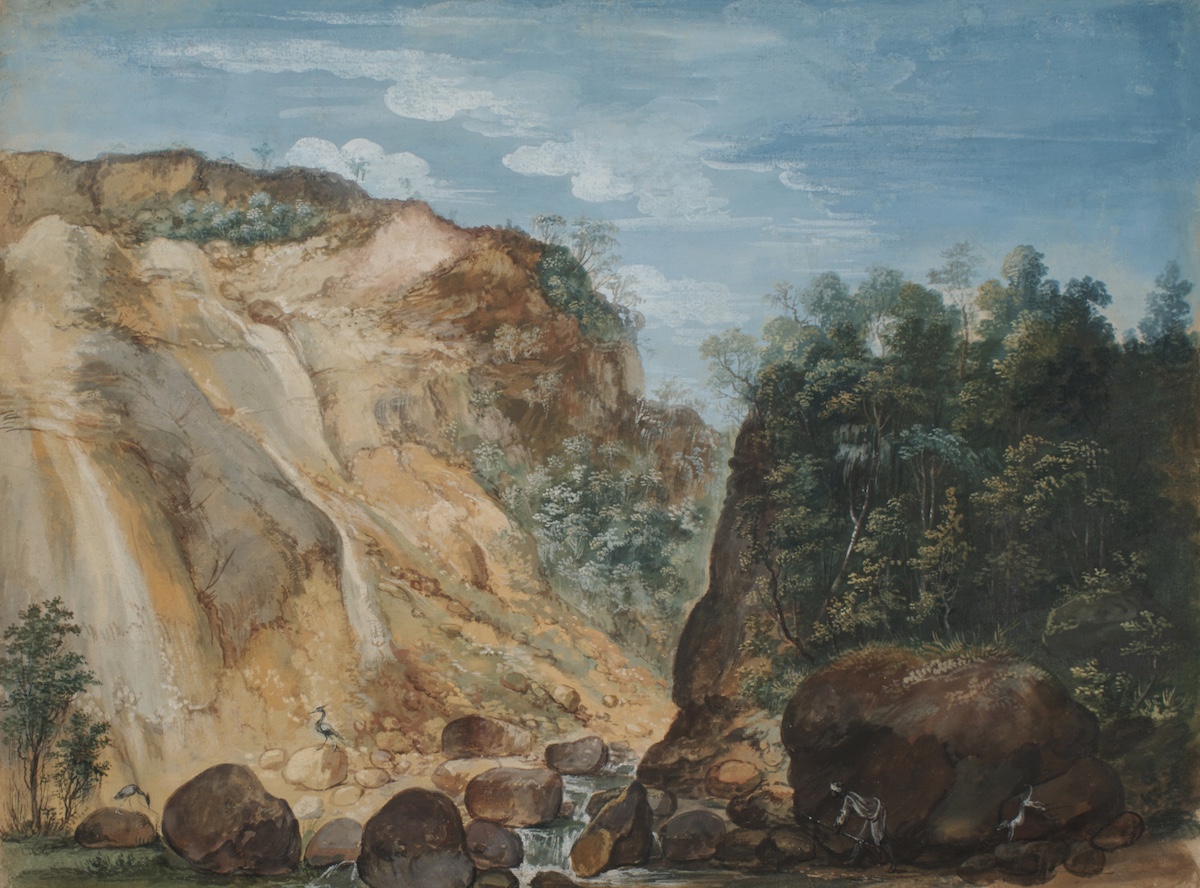 Attributed to Jules Joseph Honoré Coussin, A Hunter in the Marigot Cliffs, Guadeloupe, c. 1805, gouache. The Clark, 2024.1
Attributed to Jules Joseph Honoré Coussin, A Hunter in the Marigot Cliffs, Guadeloupe, c. 1805, gouache. The Clark, 2024.1Jules Joseph Honoré Coussin was a white Creole, born in Basse-Terre in 1773 on his family’s plantation. Like his father before him, he served as a court clerk, first in Pointe-à-Pitre and then in Basse-Terre. Fond of the natural sciences, geology, and nature, he produced an album containing three hundred drawings of picturesque views of Guadeloupe.
